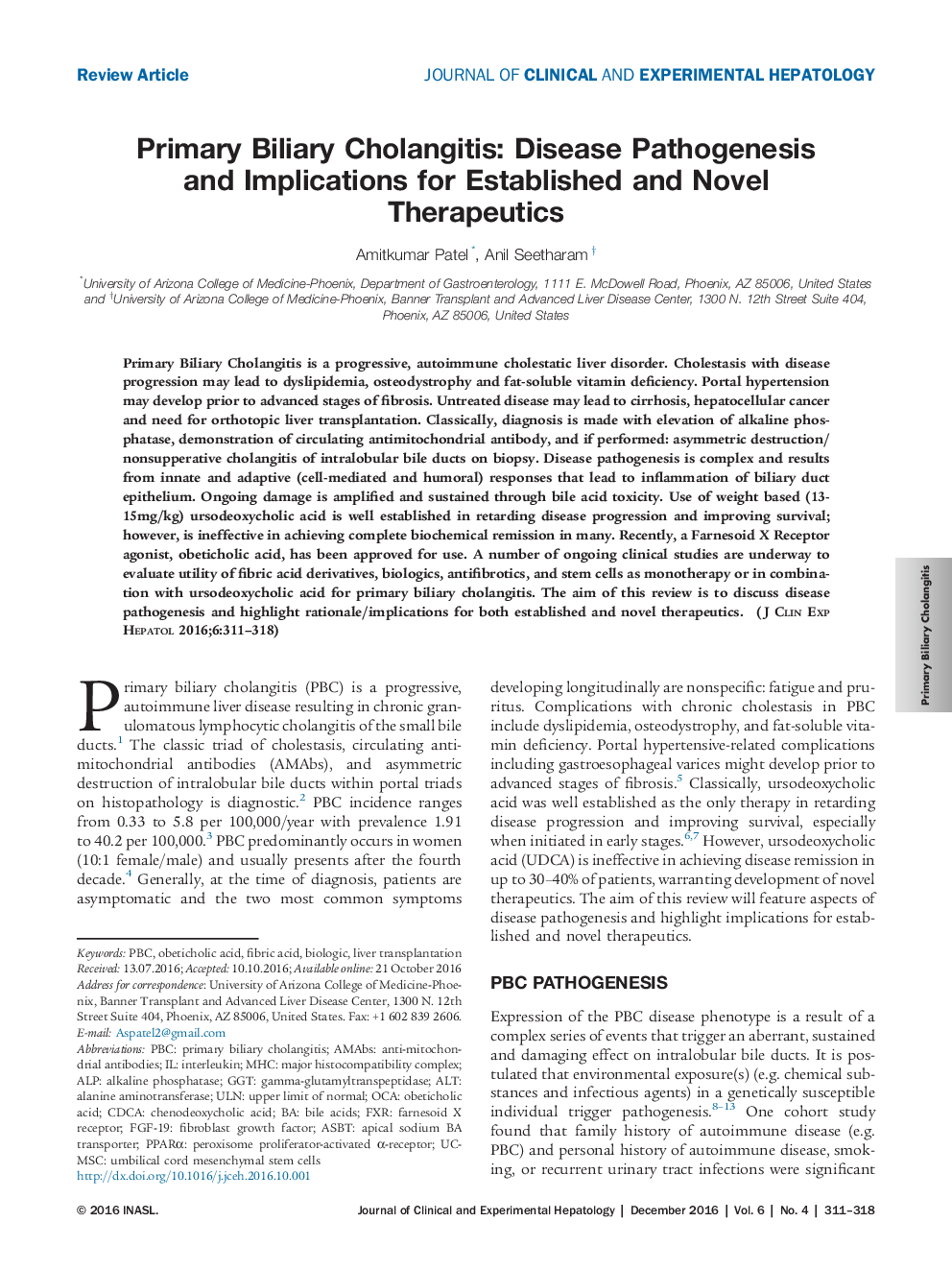| Article ID | Journal | Published Year | Pages | File Type |
|---|---|---|---|---|
| 5664963 | Journal of Clinical and Experimental Hepatology | 2016 | 8 Pages |
Primary Biliary Cholangitis is a progressive, autoimmune cholestatic liver disorder. Cholestasis with disease progression may lead to dyslipidemia, osteodystrophy and fat-soluble vitamin deficiency. Portal hypertension may develop prior to advanced stages of fibrosis. Untreated disease may lead to cirrhosis, hepatocellular cancer and need for orthotopic liver transplantation. Classically, diagnosis is made with elevation of alkaline phosphatase, demonstration of circulating antimitochondrial antibody, and if performed: asymmetric destruction/nonsupperative cholangitis of intralobular bile ducts on biopsy. Disease pathogenesis is complex and results from innate and adaptive (cell-mediated and humoral) responses that lead to inflammation of biliary duct epithelium. Ongoing damage is amplified and sustained through bile acid toxicity. Use of weight based (13-15mg/kg) ursodeoxycholic acid is well established in retarding disease progression and improving survival; however, is ineffective in achieving complete biochemical remission in many. Recently, a Farnesoid X Receptor agonist, obeticholic acid, has been approved for use. A number of ongoing clinical studies are underway to evaluate utility of fibric acid derivatives, biologics, antifibrotics, and stem cells as monotherapy or in combination with ursodeoxycholic acid for primary biliary cholangitis. The aim of this review is to discuss disease pathogenesis and highlight rationale/implications for both established and novel therapeutics.
